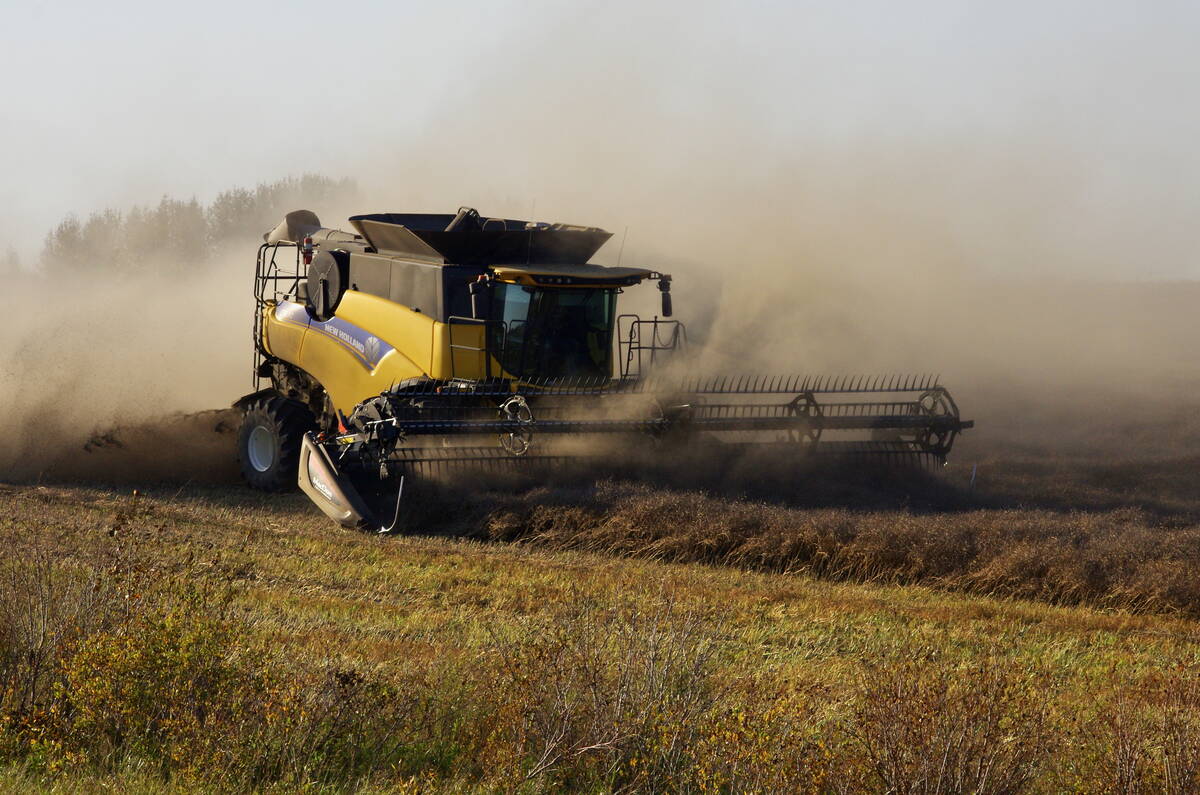Canola has another feather in its cap — one which is expected to put more money in farmers’ pockets.
In a ‘proposed decision’ released in April the U.S. Environmental Protection Agency (EPA) recognized canola oil’s value as an environment-friendly alternative to fossil-based fuel — a move that’s expected to add new demand for the crop.
“This is a positive step forward in securing a canola oil pathway in the growing U.S. renewable diesel and sustainable aviation fuel markets, putting canola on a level playing field with other oilseed crops,” Jim Everson, Canola Council of Canada (CCC) president, said in a news release April 18 after EPA said canola oil-based renewable diesel, jet fuel and other biofuels qualify as “advanced biofuels” under the Renewable Fuel Standard (RFS) program.
Read Also

ICE Canada Weekly: Canola a “tough market”
There are grim prospects for canola prices as the New Year approaches said Winnipeg-based trader and farmer Bill Craddock.
“In addition to the environmental benefits, this will also help diversify markets and support value added processing, creating opportunities for the entire canola sector.”
The CCC is optimistic EPA will come to the same conclusion this summer when it releases its final decision, Everson said in an interview April 19.
“The fact that EPA has come to the position that it has, after all its analysis, I think bodes very well for the industry,” he said.
Why it matters: Canola, already one of Canada’s most economically important crops, could see even stronger demand as the world seeks lower carbon fuels in the fight to slow climate change.
A statement from The White House said: “This action demonstrates EPA’s commitment to approving new petitions for renewable fuels that can provide greenhouse gas benefits as well as reduce reliance on petroleum fuels.”
The CCC worked with the Canadian Oilseed Processors Association on a U.S. Canola Association petition to the EPA in 2020 to approve canola oil as a feedstock for renewable diesel, jet fuel and other biofuels, Everson said. Renewable diesel and renewable jet fuel are chemically similar to petroleum and are increasingly used in existing vehicles and aircraft to help decarbonize the transportation sector.
The EPA found canola-based renewable diesel, jet fuel and other fuels were 60 to 69 per cent lower in carbon emissions than petroleum-based fuels, Everson said. The EPA’s threshold for sustainable fuels is a 50 per cent cut in emissions, he added.
“We have some analysis that the canola council has done a little while ago that shows canola as a feedstock in biofuels can reduce GHG’s (greenhouse gases) by up to 90 per cent relative to regular fossil petroleum diesel,” he added.
Part of canola’s advantage is its high proportion of oil to meal. But because of production practices, including minimum- and no-till, Canadian canola production sequesters more carbon than some other producers.
Canola oil is increasing being used in biodiesel and renewable fuels, but it remains one of the healthiest food oils in the world, Everson said.
“It’s low in sat (saturated) fats, no-trans fats and all the right fats and oils.” he said. “It’s an attractive and very flexible oil. And demand for vegetable oil generally continues to increase globally as well so there’s going to be a lot of continued demand for canola.”
In fact, some observers might conclude canola oil demand is exceeding supply, following months of prices almost double what they often have been.
How much demand for canola-based fuel will increase, especially in the U.S., is difficult to predict, Everson said. The same is true when it comes to forecasting American canola production. Last year the U.S. planted just 2.152 million acres of canola. Most of that — 1.75 million acres — was seeded in North Dakota.
In January the U.S. Department of Agriculture predicted U.S. canola acres would remain unchanged in 2022, providing an opportunity for Canadian canola farmers.
However, despite very high new-crop prices, Statistics Canada estimated April 26 that Canadian farmers would seed 20.9 million acres this spring, down seven per cent from last year.
While canola prices are high, so are production costs, StatCan said. Some of the decline might be due to concerns about the drought continuing.
The CCC’s target is for Canada to produce 26 million tonnes of canola by 2025. Given annual plantings shouldn’t go much higher so land can be properly rotated to reduce canola pests, the CCC is focused on boosting canola yields to 52 bushels an acre, from the current 40.
Last year, despite 22.5 million acres of Canadian canola, drought cut average yields to 25 bushels, with production hitting just 12.6 million tonnes.
Canola yields typically bounce back following a poor yield, Everson said.
While the 26 million-tonne canola production goal might not be achieved in just three years, setting production targets has worked before, Everson said. Certainly strong canola prices and announcements for expanded and new Canadian crushing plants send a strong market signal for increased production, he added.
“So it’s all about trying to work with the producer to make sure they have the crop inputs that are necessary and we have the research going on in the private sector and the public sector to focus on increased yields,” Everson said.
— Allan Dawson is a reporter for the Manitoba Co-operator at Miami, Man.















